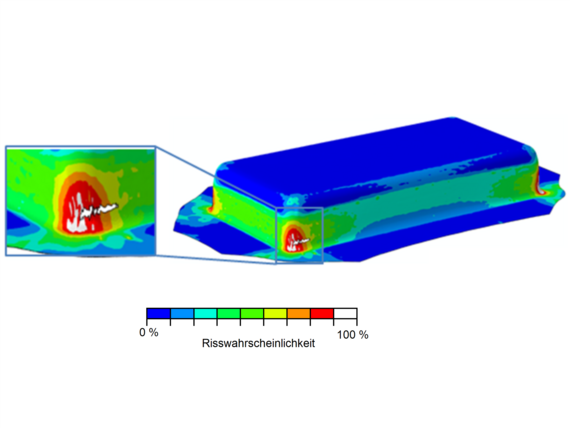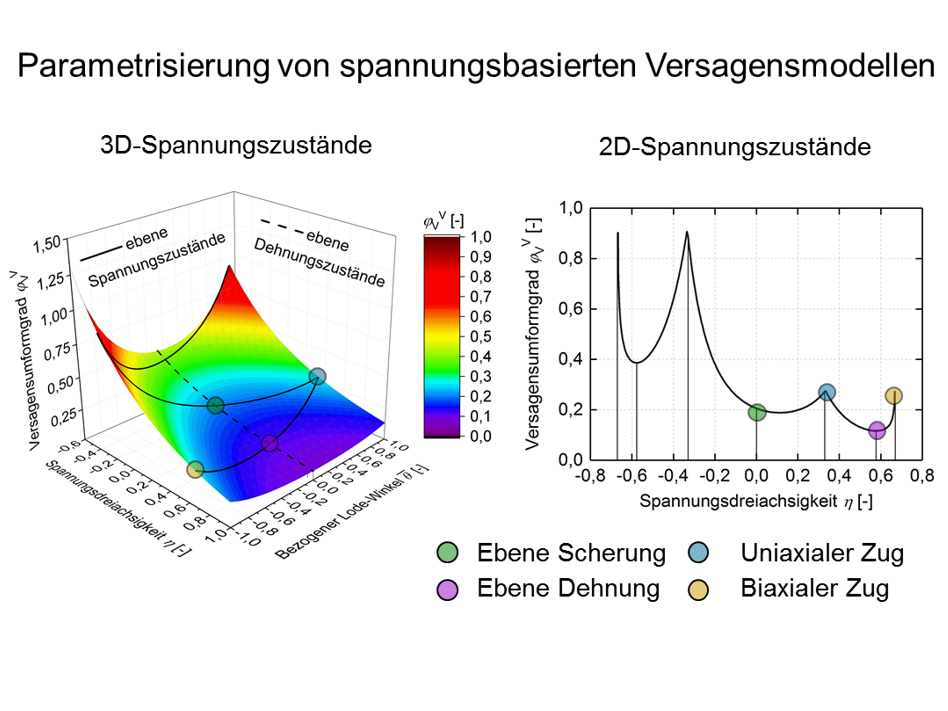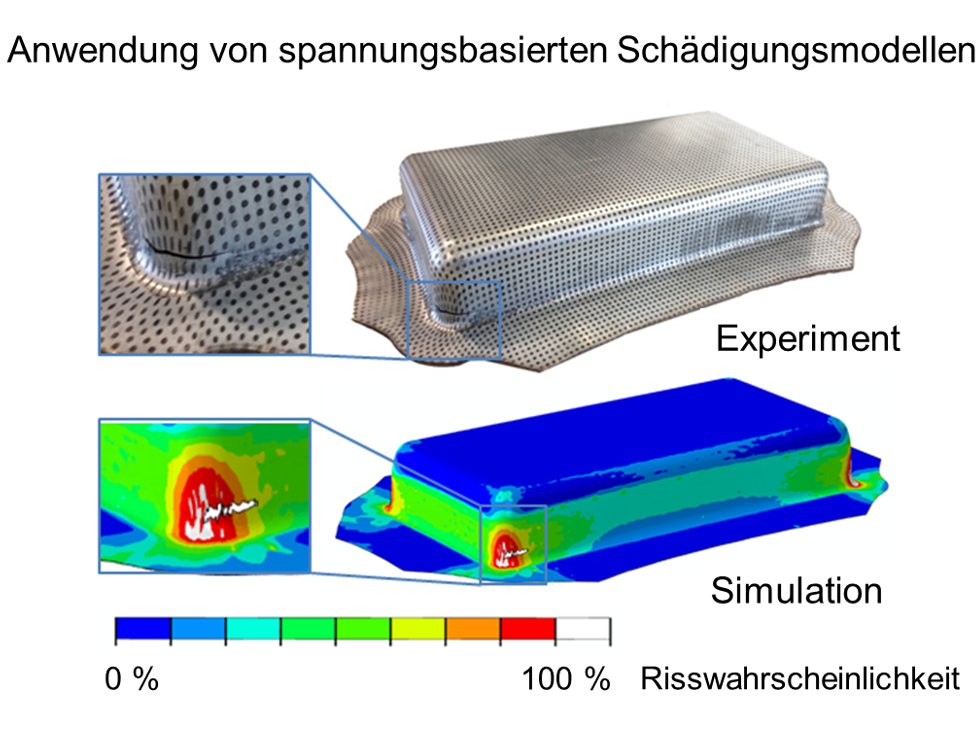


For the process design, knowledge of the prevailing forming limits is helpful. For this purpose, the damage evolution in the workpiece is calculated with the help of FE simulation. The required failure characterisation, parameterisation and validation of damage models are the subject of research at IFUM.
Various tests are carried out at IFUM to characterise the failure behaviour under consideration of process relevant aspects like temperature, forming speed and material specific damage modes. For example, a shear tensile specimen developed at IFUM can be used to investigate damage evolution at different stress states by means of a special adjustable die setup. Furthermore, also effect of temperature can be taken into account during these tests to analyse the damage evolution in a more realistic manner.
Based on the determined failure characteristics, different damage models can be parameterised and implemented in various FE software systems. Subsequently, numerical simulation is used to analyse and optimise forming processes regarding damage occurrence. In this context simulation can significantly reduce number of try-out tests and speed-up the process development.
Publication
Advanced High Strength Steels (AHSS) are widely used in today's automotive structures for lightweight design purposes. FE simulation is commonly used for the design of forming processes in automotive industry. Therefore, besides the description of the plastic flow behaviour, also the definition of forming limits in order to efficiently exploit the forming potential of a material is required. AHSS are prone for crack appearances without prior indication by thinning, like exemplary shear fracture on tight radii and edge-fracture, which cannot be predicted by conventional Forming Limit Curve (FLC). Stress based damage models are able to do this. However, the parameterisation of such models has not yet been standardised. In this study a butterfly specimen geometry, which was developed at the Institute for Forming Technology and Machines (IFUM), was used for a stress state dependent fracture characterisation. The fracture behaviour of two AHSS, CP800 and DP1000, at varied stress states between pure shear and uniaxial loading was characterised by an experimental-numerical approach. For variation of the stress state, the specimen orientation relative to the force direction of the uniaxial testing machine was orientated at different angles. In this way, the relevant displacement until fracture initiation was determined experimentally. Subsequently, the experimental tests have been numerically reproduced giving information about the strain and stress evolution in the crack impact area of the specimen for the experimentally identified fracture initiation. With the help of this testing procedure, two different stress-based damage models, Modified Mohr-Coulomb (MMC) and CrachFEM, were parameterised and compared.
[Translate to English:] Bernd-Arno Behrens, Kai Brunotte, Hendrik Wester and Matthäus Dykiert (2021) Key Engineering Materials, Volume: 883; pages: 294-302.




























